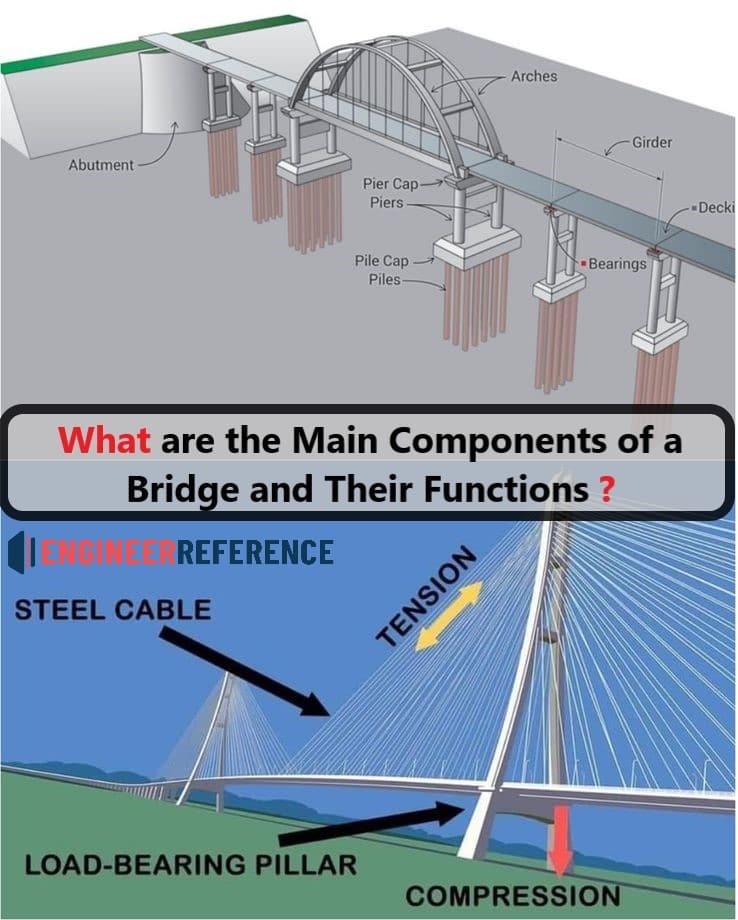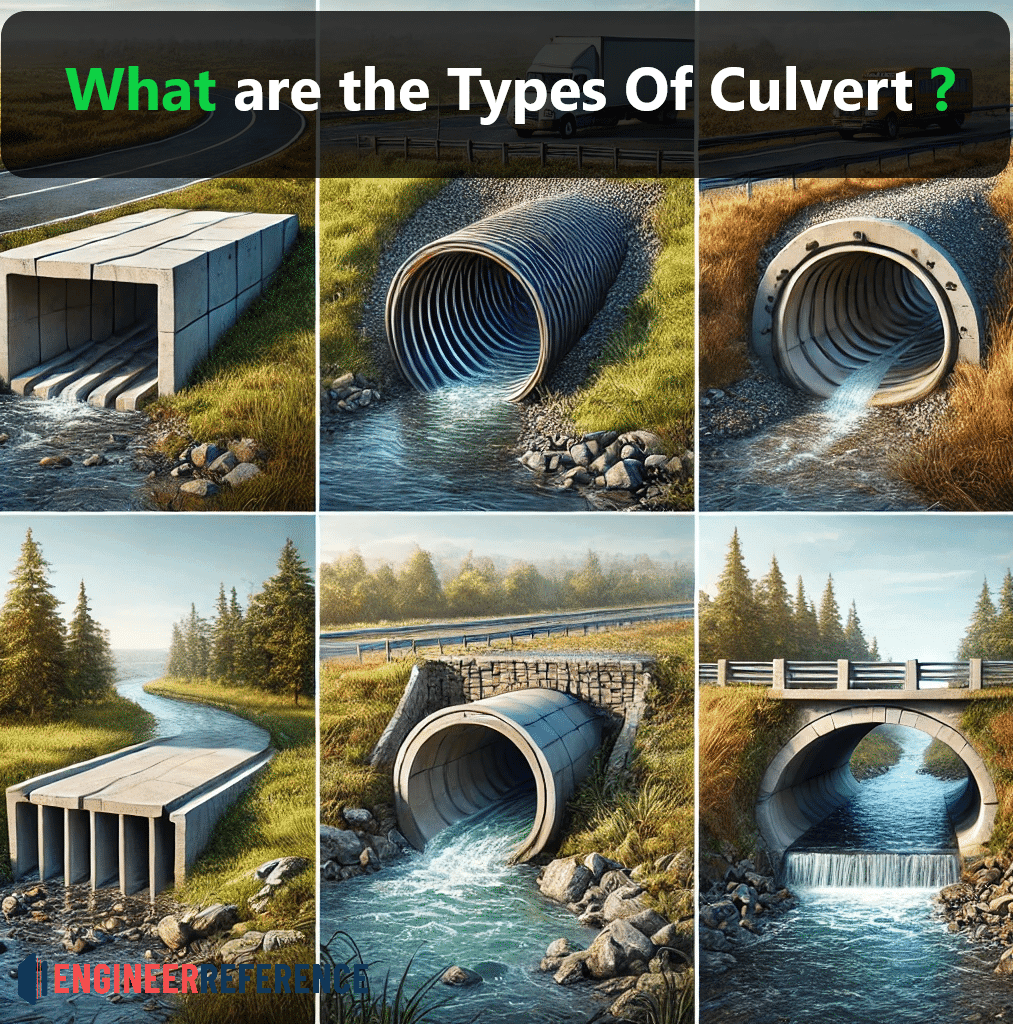What are the Main Components of a Bridge and Their Functions?
Bridges are essential infrastructure that connect communities and facilitate the movement of goods and people. A bridge’s stability and durability depend on multiple critical components that work together to withstand various loads and environmental conditions. Each component has a specific role, ensuring the overall functionality of the structure. Let’s delve into the main components of a bridge and their respective functions.
1. Abutments
Abutments are critical elements found at each end of a bridge. Their primary function is to support the ends of the bridge span, providing stability and ensuring that the deck remains in place. Abutments also act as retaining walls, resisting the horizontal forces exerted by the load on the bridge. In most cases, they carry the weight of the deck and any live loads, such as vehicles and pedestrians, and transfer these loads safely to the ground.
The strength and stability of abutments are crucial as they bear significant pressure. Properly designed abutments prevent the bridge from shifting or sinking, ensuring the bridge’s longevity.
2. Piers
Piers are vertical structures that serve as intermediate supports for the bridge span. While abutments support the ends, piers carry the load in the middle of longer bridges, distributing it evenly between the abutments. Piers must be strong enough to bear both vertical loads, such as the weight of the bridge and traffic, and horizontal forces, like those caused by wind or water currents.
Depending on the type of bridge, piers can be made from materials like concrete, steel, or even stone, and are designed to withstand the specific environmental pressures they face, such as erosion in river-based bridges.
3. Bearings
Bearings are devices installed between the bridge deck and the piers or abutments. Their function is to allow controlled movement, such as rotation or translation, which helps absorb stresses from traffic loads, temperature changes, and even seismic activity. Bearings prevent excessive strain on the bridge structure by allowing the deck to expand and contract without cracking or warping.
The main types of bearings include elastomeric bearings, pot bearings, and roller bearings, each suited for specific movement needs and load capacities.
4. Deck
The deck is the top surface of the bridge that supports vehicular and pedestrian traffic. It is often made of reinforced concrete, steel, or composite materials to ensure it can carry heavy loads. The deck’s surface is typically paved, providing a smooth roadway or pathway.
The deck plays a critical role as it directly supports the live loads, ensuring a safe passage for vehicles and pedestrians. It’s designed to withstand wear from traffic, weather conditions, and temperature fluctuations.
5. Girders and Beams
Girders and beams are horizontal support structures that run beneath the deck. They are responsible for distributing the weight of the deck and any live loads across the piers and abutments. Beams can be made of steel, concrete, or wood, depending on the design and the load requirements of the bridge.
Girders, often larger than beams, act as the primary structural support in many bridges. They ensure the deck remains rigid and can handle high stress loads, maintaining the bridge’s stability under heavy traffic.
6. Cables (for Suspension Bridges)
In suspension bridges, cables are one of the most essential components. They hold the weight of the deck and distribute it to the towers and anchorages. The cables are typically made of high-tensile steel, which can bear enormous loads while remaining flexible.
Suspension bridges, such as the Golden Gate Bridge, rely on these cables to span long distances without the need for intermediate piers. The flexibility of the cables allows the bridge to sway under strong winds or seismic activity, providing both strength and adaptability.
7. Expansion Joints
Expansion joints are critical for bridges that experience significant temperature fluctuations. These joints allow the bridge deck to expand and contract with changes in temperature, preventing cracks or other structural damage. Without expansion joints, a bridge could suffer from severe cracking, ultimately compromising its safety and longevity.
Expansion joints are usually placed at intervals along the deck, particularly at points where the bridge meets the ground or where sections of the bridge join together.
8. Arch (for Arch Bridges)
The arch is a key structural element in arch bridges, where it provides support by distributing the weight of the bridge and its loads to the abutments. The natural strength of the arch allows for a graceful span with fewer materials, making it an efficient design choice for many stone and steel bridges.
Because the arch relies on compression to transfer forces, it is inherently strong and can support substantial weights. Famous examples of arch bridges include the Pont du Gard in France and the Sydney Harbour Bridge in Australia.
9. Trusses (for Truss Bridges)
Trusses are a framework of triangular units that distribute loads across a bridge’s span. In truss bridges, this structure provides excellent strength-to-weight ratios, making them ideal for long spans and heavy loads. The triangular design of the trusses ensures that the forces are evenly distributed, minimizing strain on any one component.
Truss bridges are highly efficient in materials use and can support substantial loads, which is why they are commonly used in railway bridges and road bridges in rural areas.
10. Foundation
The foundation of a bridge is its most critical component, as it transfers the entire load of the bridge to the ground. Foundations can be shallow or deep, depending on the type of soil and the size of the bridge. In areas with poor soil conditions, deep foundations such as piles or caissons are used to reach more stable ground.
A strong foundation ensures that the bridge remains upright and stable, even in adverse conditions like flooding or seismic activity.
11. Railings and Barriers
Railings and barriers are essential safety features that prevent vehicles and pedestrians from falling off the sides of the bridge. While their primary purpose is safety, they also contribute to the aesthetic appeal of a bridge. These components are often made from metal, concrete, or stone, designed to withstand impact forces while maintaining structural integrity.
Railings must meet strict safety standards, ensuring they are tall and strong enough to protect users from accidents.
12. Approach Slab
The approach slab provides a smooth transition between the bridge deck and the adjacent roadway. Without it, vehicles and pedestrians would experience a jarring shift when moving from the ground onto the bridge, which could cause discomfort or even accidents.
Approach slabs also help reduce the settlement of the bridge abutments, ensuring a smooth ride for users and preserving the structural integrity of the bridge.
13. Drainage Systems
Effective drainage systems are crucial for the longevity of a bridge. Water accumulation on the deck can lead to erosion, material degradation, and even structural damage if not properly managed. Drainage systems are designed to channel water off the deck and away from critical structural components.
By preventing water pooling and directing runoff, drainage systems help maintain the safety and durability of the bridge.
14. Lighting and Signage
Proper lighting and signage are essential for the safety and functionality of a bridge. Lighting ensures that the bridge is visible at night or during adverse weather conditions, while signage helps direct traffic and ensure safe passage for vehicles and pedestrians.
Modern bridges often include energy-efficient LED lighting systems and clear, reflective signage to enhance visibility and reduce accidents.
15. Cable-Stayed Bridges
Cable-stayed bridges use a different method of support than suspension bridges. Here, cables are attached directly to towers, which support the deck. This design is efficient and allows for long spans without the need for intermediate piers.
Cable-stayed bridges are often more economical to build than suspension bridges and provide a sleek, modern aesthetic. The Millau Viaduct in France is one of the most famous examples of a cable-stayed bridge.
What are the Main Components of a Bridge and Their Functions?
FAQs
1. What is the most important part of a bridge?
The foundation is the most critical component, as it provides the necessary stability and support for the entire structure.
2. What materials are commonly used in bridge construction?
Concrete, steel, stone, and wood are the most commonly used materials, each selected based on the specific requirements of the bridge’s design and location.
3. Why are expansion joints necessary?
Expansion joints allow the bridge to expand and contract with temperature changes, preventing cracks and structural damage.
4. What is the difference between a suspension bridge and a cable-stayed bridge?
In a suspension bridge, the deck is hung from cables suspended between towers, while in a cable-stayed bridge, the cables directly connect the deck to the towers.
5. How do piers support long bridges?
Piers are intermediate supports that help distribute the bridge’s load between the abutments, ensuring the structure remains stable over long spans.
6. What is the function of a truss in a bridge?
A truss distributes loads evenly across a bridge’s span, providing additional strength and stability through its triangular framework.
Conclusion
Bridges are complex structures made up of various components, each performing a vital function to ensure safety, stability, and longevity. From abutments and piers to cables and expansion joints, every element plays a role in distributing loads, accommodating environmental changes, and providing a safe passage for vehicles and pedestrians. Understanding the components and their functions helps engineers design better bridges that withstand the test of time and nature.






